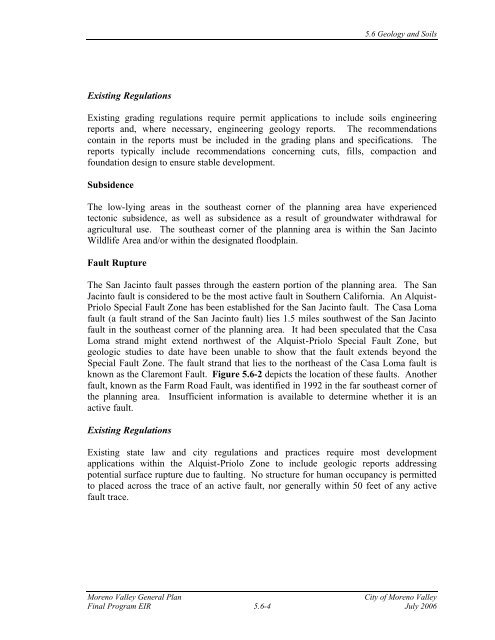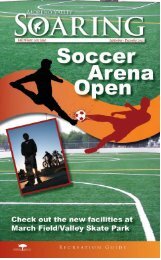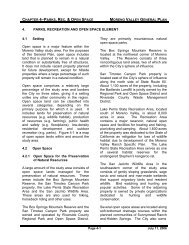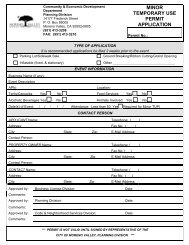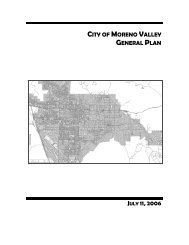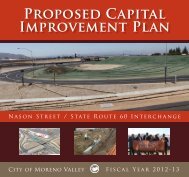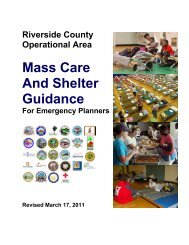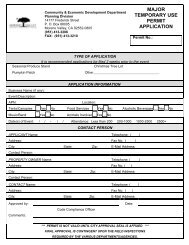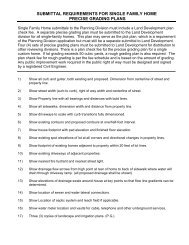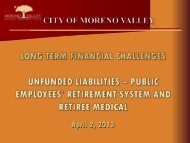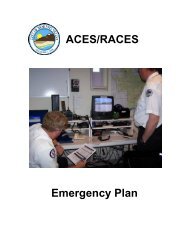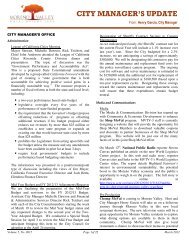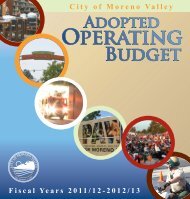Geology and Soils - City of Moreno Valley
Geology and Soils - City of Moreno Valley
Geology and Soils - City of Moreno Valley
Create successful ePaper yourself
Turn your PDF publications into a flip-book with our unique Google optimized e-Paper software.
Existing Regulations<br />
5.6 <strong>Geology</strong> <strong>and</strong> <strong>Soils</strong><br />
Existing grading regulations require permit applications to include soils engineering<br />
reports <strong>and</strong>, where necessary, engineering geology reports. The recommendations<br />
contain in the reports must be included in the grading plans <strong>and</strong> specifications. The<br />
reports typically include recommendations concerning cuts, fills, compaction <strong>and</strong><br />
foundation design to ensure stable development.<br />
Subsidence<br />
The low-lying areas in the southeast corner <strong>of</strong> the planning area have experienced<br />
tectonic subsidence, as well as subsidence as a result <strong>of</strong> groundwater withdrawal for<br />
agricultural use. The southeast corner <strong>of</strong> the planning area is within the San Jacinto<br />
Wildlife Area <strong>and</strong>/or within the designated floodplain.<br />
Fault Rupture<br />
The San Jacinto fault passes through the eastern portion <strong>of</strong> the planning area. The San<br />
Jacinto fault is considered to be the most active fault in Southern California. An Alquist-<br />
Priolo Special Fault Zone has been established for the San Jacinto fault. The Casa Loma<br />
fault (a fault str<strong>and</strong> <strong>of</strong> the San Jacinto fault) lies 1.5 miles southwest <strong>of</strong> the San Jacinto<br />
fault in the southeast corner <strong>of</strong> the planning area. It had been speculated that the Casa<br />
Loma str<strong>and</strong> might extend northwest <strong>of</strong> the Alquist-Priolo Special Fault Zone, but<br />
geologic studies to date have been unable to show that the fault extends beyond the<br />
Special Fault Zone. The fault str<strong>and</strong> that lies to the northeast <strong>of</strong> the Casa Loma fault is<br />
known as the Claremont Fault. Figure 5.6-2 depicts the location <strong>of</strong> these faults. Another<br />
fault, known as the Farm Road Fault, was identified in 1992 in the far southeast corner <strong>of</strong><br />
the planning area. Insufficient information is available to determine whether it is an<br />
active fault.<br />
Existing Regulations<br />
Existing state law <strong>and</strong> city regulations <strong>and</strong> practices require most development<br />
applications within the Alquist-Priolo Zone to include geologic reports addressing<br />
potential surface rupture due to faulting. No structure for human occupancy is permitted<br />
to placed across the trace <strong>of</strong> an active fault, nor generally within 50 feet <strong>of</strong> any active<br />
fault trace.<br />
<strong>Moreno</strong> <strong>Valley</strong> General Plan <strong>City</strong> <strong>of</strong> <strong>Moreno</strong> <strong>Valley</strong><br />
Final Program EIR 5.6-4 July 2006


